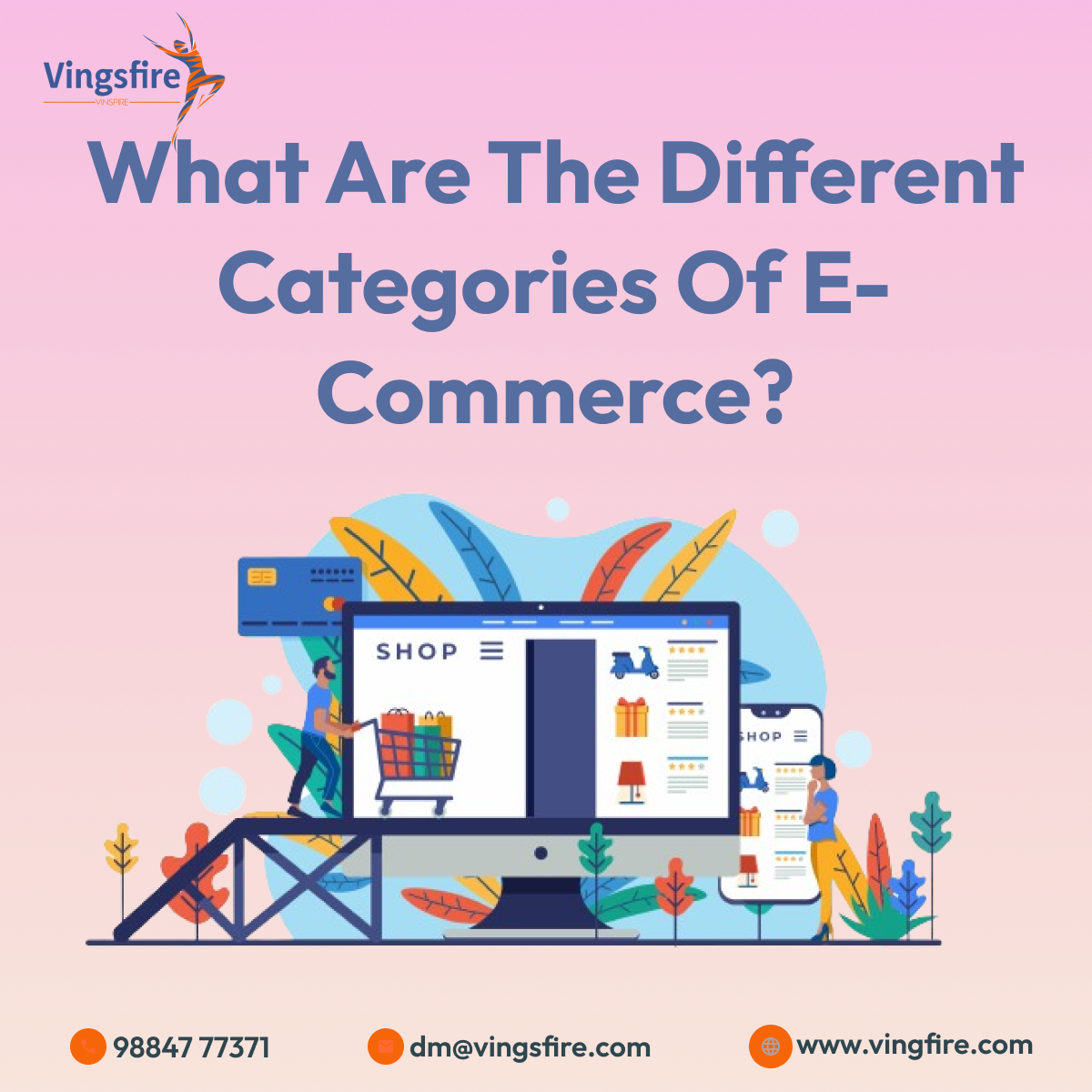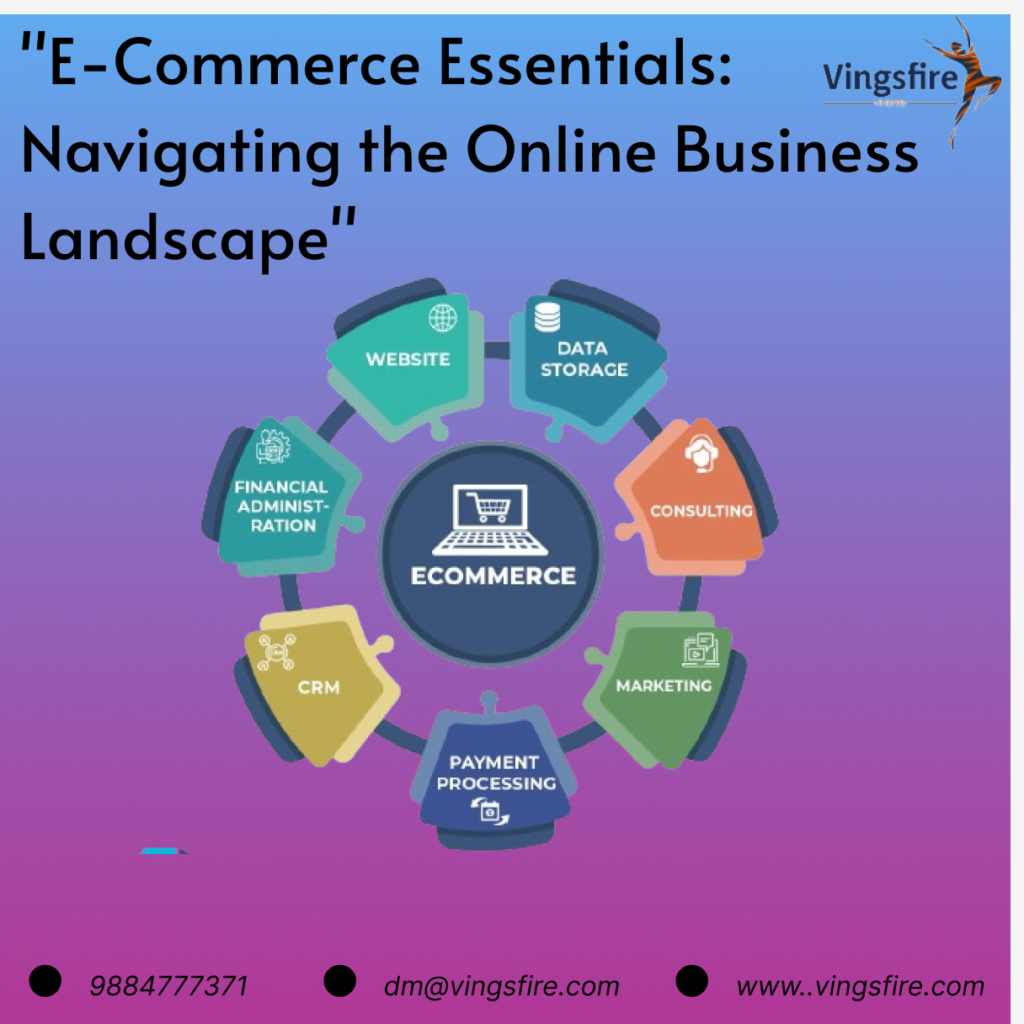Introduction :
The digital age has ushered in an era of unparalleled convenience and accessibility, transforming the way we conduct business. At the forefront of this digital revolution is e-commerce, a vast landscape that encompasses various categories, each catering to unique consumer needs. In this blog post, we will delve into the different categories of e-commerce, shedding light on the diverse realms that make online shopping a dynamic and ever-evolving experience.
Learn More About Vingsfire:
1.LINKEDIN
Business-to-Consumer (B2C) E-Commerce :
The most familiar and widely used category, B2C e-commerce involves transactions between businesses and individual consumers. Think of your favorite online retail giants, where consumers can browse, select, and purchase products or services directly from the comfort of their homes. This category has witnessed exponential growth, offering a plethora of options ranging from fashion and electronics to groceries and beyond.
Business-to-Business (B2B) E-Commerce :
B2B e-commerce focuses on transactions between businesses. In this category, companies engage in buying and selling goods, services, or information to one another. Online platforms facilitate seamless interactions, streamlining procurement processes and fostering collaborations across industries. B2B e-commerce is crucial for enhancing efficiency in the supply chain and establishing robust business relationships.
Consumer-to-Consumer (C2C) E-Commerce :
C2C e-commerce involves transactions between individual consumers, cutting out the traditional business intermediary. Online marketplaces and auction platforms exemplify this category, enabling individuals to buy and sell second-hand goods or unique items directly. Peer-to-peer transactions have gained popularity, creating a sense of community and trust among users
Consumer-to-Business (C2B) E-Commerce :
Contrary to the traditional B2C model, C2B e-commerce allows individual consumers to sell products or offer services to businesses. This model has gained prominence with the rise of influencers, freelancers, and content creators who monetize their skills and offerings. Crowdsourcing platforms also fall under this category, where businesses tap into the expertise of individuals for various tasks.
Mobile Commerce (M-Commerce):
Mobile commerce, or M-Commerce, has emerged as a distinct category fueled by the widespread use of smartphones and tablets. This category focuses on transactions conducted through mobile devices, leveraging mobile apps and optimized websites. M-Commerce provides unparalleled convenience, allowing users to shop on-the-go, make secure payments, and receive personalized offers based on their location and preferences. The integration of features like mobile wallets, QR code scanning, and augmented reality enhances the overall mobile shopping experience. As the use of mobile devices continues to rise globally, M-Commerce represents a pivotal evolution in how consumers engage with e-commerce platforms.
Social Commerce:
Social commerce is a fusion of social media and e-commerce, creating a dynamic platform where users can discover, share, and purchase products directly within social media channels. This category capitalizes on the social interactions and recommendations of users, integrating shopping features seamlessly into platforms like Instagram, Facebook, and Pinterest. Social commerce blurs the lines between socializing and shopping, with influencers and brands collaborating to showcase products through engaging content. The “Buy Now” buttons, shoppable posts, and in-app checkout options simplify the purchasing process, turning social interactions into direct sales. This category reflects the growing importance of community-driven purchasing decisions, where user-generated content and social proof play a significant role in shaping consumer behavior.
Conclusion :
In conclusion, the world of e-commerce is a multifaceted landscape, encompassing diverse categories that cater to the needs and preferences of various stakeholders. Whether it’s the seamless B2C transactions, collaborative B2B engagements, individual-to-individual C2C exchanges, or the innovative C2B model, each category plays a vital role in shaping the digital marketplace. As technology continues to evolve, we can expect even more dynamic shifts and innovations within these e-commerce categories, providing consumers and businesses alike with new and exciting opportunities.


